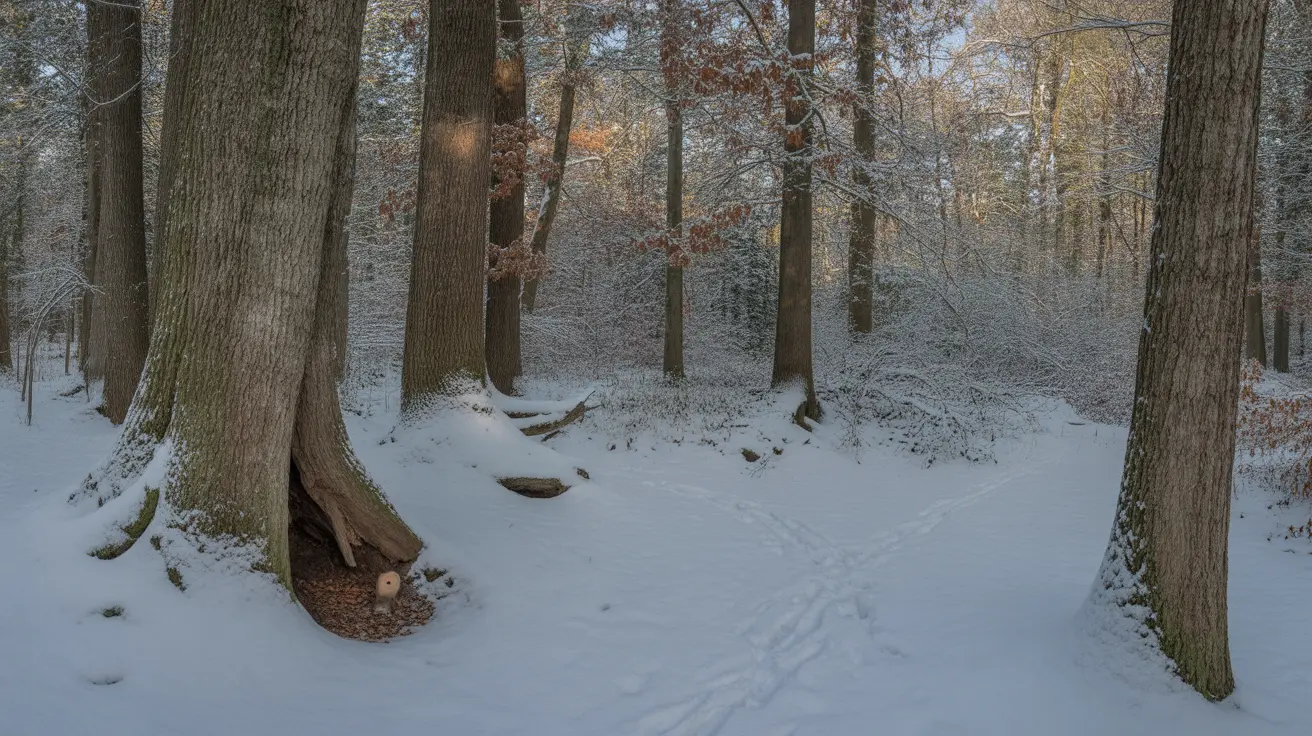As winter temperatures drop and snow begins to blanket the landscape, many pet owners wonder how wild animals manage to survive the harsh conditions that would challenge even our well-cared-for companion animals. Understanding animal winter survival strategies not only satisfies our curiosity about wildlife but also helps us appreciate the remarkable adaptations that allow creatures to thrive in challenging environments.
Thorn Creek Nature Center offers guided winter hikes that provide fascinating insights into how animals survive cold weather through various survival mechanisms. These educational experiences reveal the incredible strategies wildlife employs to endure freezing temperatures, from sophisticated hibernation techniques to ingenious shelter-building behaviors that put even the coziest pet beds to shame.
Winter Animal Adaptations: Nature's Survival Toolkit
Wildlife has evolved remarkable winter animal adaptations that allow them to survive conditions that would be impossible for domestic pets without human intervention. These adaptations include physical changes like growing thicker fur coats, developing layers of insulating fat, and even changing coloration to blend with snowy environments.
Some animals develop specialized behaviors for winter survival, such as caching food supplies throughout autumn or forming social groups that share body warmth. These natural strategies demonstrate the importance of preparation and community support—lessons that apply to caring for our own pets during harsh weather conditions.
Hibernation in Animals: The Ultimate Energy Conservation
One of the most fascinating survival strategies is hibernation in animals, a state of dormancy that allows creatures to conserve energy when food becomes scarce. True hibernators like ground squirrels and some bat species dramatically slow their heart rates and lower their body temperatures to near-freezing levels.
Understanding hibernation helps pet owners appreciate why some animals seem to disappear during winter months. Unlike pets who depend on us for warmth and nutrition, hibernating animals have developed internal biological clocks that trigger these energy-saving behaviors automatically.
Animal Migration Patterns: Nature's Seasonal Relocation
While some animals hibernate, others employ animal migration patterns as their primary winter survival strategy. Birds, in particular, demonstrate remarkable navigational abilities as they travel thousands of miles to reach warmer climates where food remains abundant.
These migration journeys showcase the incredible endurance and instinctual knowledge that wild animals possess. For pet owners who notice changes in local bird populations during winter, understanding migration patterns helps explain why backyard feeders may attract different species throughout the cold months.
Animal Tracks in Snow: Reading Winter's Wildlife Stories
Winter provides unique opportunities for wildlife observation through animal tracks in snow. These frozen footprints tell stories of nighttime adventures, hunting patterns, and territorial behaviors that remain hidden during other seasons.
Learning to identify tracks enhances nature appreciation and provides valuable insights into animal behavior cold weather conditions. Just as we might track our pets' activities through muddy paw prints, wild animal tracks reveal the bustling activity that continues even in the quietest winter landscapes.
Animal Shelter and Denning: Winter Architecture
Wild animals demonstrate remarkable engineering skills when creating animal shelter and denning sites for winter protection. From elaborate underground burrow systems to carefully insulated tree cavities, these natural shelters rival the comfort of the coziest pet beds.
Observing how animals construct and maintain their winter shelters provides inspiration for pet owners who want to ensure their outdoor animals have adequate protection during cold months. The principles of insulation, wind protection, and strategic positioning apply whether designing a shelter for feral cats or understanding how rabbits survive freezing temperatures.
Forest Ecosystem Winter Survival: Community Strategies
The forest ecosystem winter survival depends on complex relationships between various species, from tiny insects to large mammals. These interconnected communities demonstrate how cooperation and resource sharing contribute to collective survival success.
Winter naturalist programs at locations like Thorn Creek Nature Center help visitors understand these ecosystem relationships and appreciate the delicate balance that sustains wildlife through harsh conditions.
Frequently Asked Questions
How do animals survive the winter cold without freezing?
Animals employ multiple strategies including growing thicker fur, building up fat reserves, seeking insulated shelters, and in some cases, entering hibernation or migrating to warmer regions. Many animals also change their behavior to conserve energy and stay warm.
What winter survival strategies do local wildlife use at Thorn Creek Woods?
Local wildlife at Thorn Creek Woods use various survival methods including hibernation, creating insulated dens, food caching, growing winter coats, and adapting their daily activity patterns to conserve energy during the coldest periods.
How can I learn to identify animal tracks and signs in the snow?
Winter naturalist programs and guided hikes provide excellent opportunities to learn track identification. Look for patterns in paw prints, gait spacing, and accompanying signs like scat or feeding evidence to determine which animals are active in your area.
Understanding how wild animals survive winter challenges enhances our appreciation for nature's ingenuity while reminding us of our responsibility to provide proper care for our domestic companions during cold weather. These remarkable survival strategies showcase the resilience and adaptability that make wildlife observation such a rewarding winter activity.






